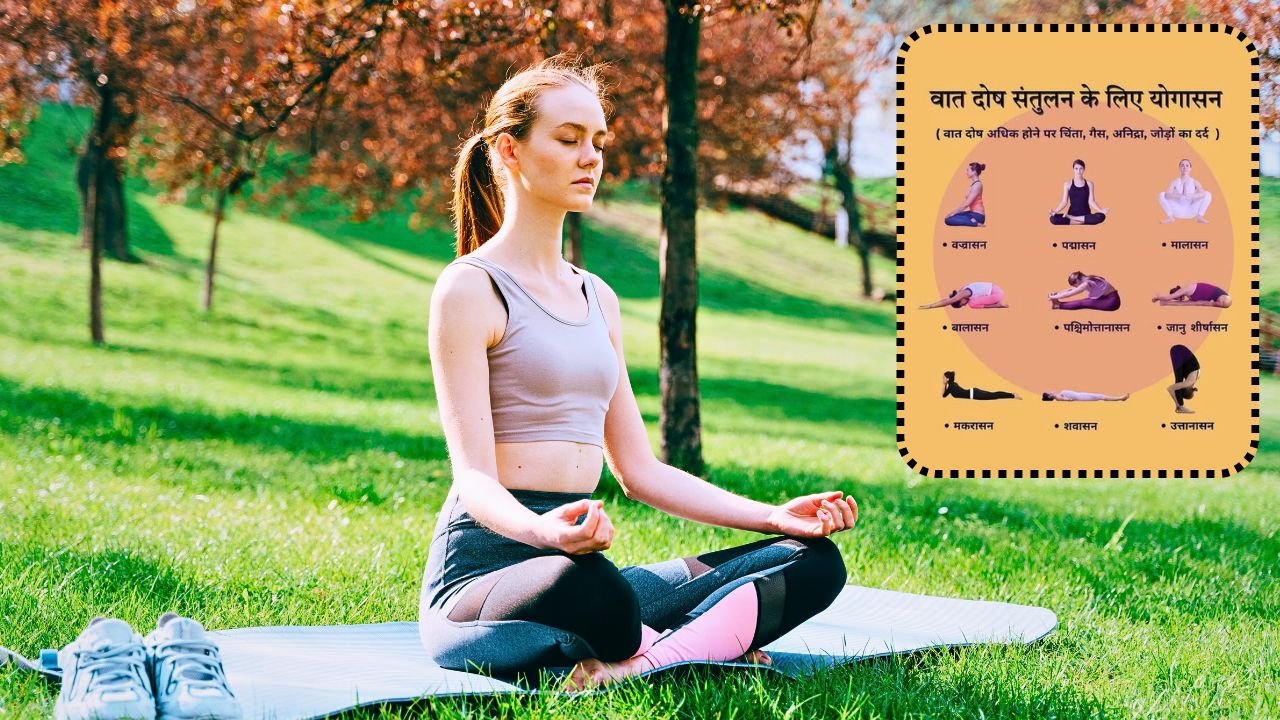Introduction: Understanding Vata Dosha and Its Balance
In the ancient science of Ayurveda, the three doshas—Vata, Pitta, and Kapha—govern our physical and mental well-being. Vata, composed of the elements air and ether, is characterized by qualities like dryness, lightness, coldness, roughness, mobility, and subtlety. When Vata is out of balance, it can manifest as anxiety, restlessness, insomnia, dry skin, constipation, and digestive issues.
Fortunately, yoga offers a powerful pathway to re-establish harmony and balance Vata dosha. Through specific postures (asanas), breathwork (pranayama), and meditation, we can cultivate groundedness, stability, and a sense of calm. At YogIntra, we believe in empowering you with the knowledge and tools to achieve holistic well-being.
Key Principles for Balancing Vata Through Yoga
When practicing yoga for Vata balance, focus on:
-
Grounding and Stabilizing Poses: Asanas that connect you to the earth and promote a sense of security.
-
Slow and Mindful Movements: Avoid rushed transitions; move with intention and awareness.
-
Gentle and Soothing Breathing: Focus on long, deep exhalations to calm the nervous system.
-
Warmth and Comfort: Practice in a warm environment and consider gentle props like blankets.
-
Restorative Poses: Incorporate postures that encourage deep relaxation.
Specific Yoga Asanas for Vata Balance with YogIntra
Let's explore some key asanas that are particularly beneficial for pacifying Vata dosha:
1. Vajrasana (Thunderbolt Pose / Diamond Pose)
-
How to: Kneel on your mat, bringing your big toes together and separating your heels. Gently lower your buttocks onto the space between your heels. Rest your hands on your thighs, palms down.
-
Benefits for Vata: This pose aids digestion, strengthens the lower body, and helps to ground the energy, making it excellent for post-meal relaxation and calming a restless mind.
2. Padasana (Hand to Foot Pose / Standing Forward Bend)
-
How to: Stand with your feet hip-width apart. Inhale, and as you exhale, hinge from your hips, folding forward. Reach for your toes, ankles, or shins. Keep a slight bend in your knees if your hamstrings are tight.
-
Benefits for Vata: Padasana calms the nervous system, relieves stress, and improves digestion by compressing the abdominal organs. The grounding nature of the pose helps to bring scattered Vata energy downwards.
3. Malasana (Garland Pose / Squat Pose)
-
How to: Squat down with your feet slightly wider than hip-width apart, toes pointing outwards. Bring your palms together at your heart center and use your elbows to gently press your knees open.
-
Benefits for Vata: Malasana deeply stretches the hips, ankles, and groins, releasing tension. It also aids in elimination and grounds the body, counteracting Vata's tendency towards lightness and upward movement.
4. Balasana (Child's Pose)
-
How to: From a kneeling position, sit back on your heels. Separate your knees wide or keep them together. Fold forward, resting your torso between or on your thighs. Extend your arms forward or rest them alongside your body.
-
Benefits for Vata: Balasana is a deeply comforting and restorative pose. It calms the brain, helps relieve stress and fatigue, and gently stretches the hips, thighs, and ankles – perfect for grounding and soothing Vata.
5. Paschimottanasana (Seated Forward Bend)
-
How to: Sit with your legs extended straight in front of you, feet flexed. Inhale, lengthen your spine, and as you exhale, hinge from your hips, folding forward over your legs. Reach for your feet, ankles, or shins.
-
Benefits for Vata: This pose calms the brain and helps relieve stress and mild depression. It also stretches the spine, shoulders, and hamstrings while stimulating the digestive organs, addressing common Vata imbalances.
6. Janu Sirsasana (Head-to-Knee Forward Bend)
-
How to: Sit with your left leg extended straight. Bend your right knee and bring the sole of your right foot to your inner left thigh. Inhale, lengthen, and exhale, fold forward over your left leg. Repeat on the other side.
-
Benefits for Vata: Similar to Paschimottanasana, Janu Sirsasana offers a deep forward fold that calms the nervous system and aids digestion. The asymmetrical nature of the pose can also help release tension in the hips and lower back.
7. Makarasana (Crocodile Pose)
-
How to: Lie on your stomach. You can either cross your arms and rest your forehead on your forearms, or stack your hands and rest your forehead on your hands. Allow your feet to fall open to the sides.
-
Benefits for Vata: Makarasana is a very relaxing and passive pose that soothes the nervous system and releases tension in the lower back and abdomen. It's excellent for reducing stress and promoting a sense of ease.
8. Savasana (Corpse Pose)
-
How to: Lie flat on your back, arms alongside your body, palms facing up. Allow your feet to fall open. Close your eyes and allow your body to completely relax, surrendering to the support of the earth.
-
Benefits for Vata: Savasana is crucial for Vata balance. It integrates the benefits of your practice, allows the nervous system to fully calm down, and promotes deep relaxation, reducing anxiety and promoting restful sleep.
9. Uttanasana (Standing Forward Bend) - Reiteration for emphasis as Padasana is a variation
-
How to: (As described for Padasana) Stand tall, exhale and hinge from your hips to fold forward. Keep a slight bend in the knees if needed.
-
Benefits for Vata: This pose is wonderfully grounding and calming. It helps to release tension in the spine, hamstrings, and calves, while also calming the mind and reducing anxiety.
Bringing it All Together for Vata Balance
For optimal Vata balancing, try to incorporate a consistent yoga practice into your routine. Focus on slow, deliberate movements, mindful breathing, and adequate rest. Remember to listen to your body and honor its needs. At YogIntra, we offer guided classes and resources specifically designed to help you achieve balance and well-being.
By embracing these yoga asanas and principles, you can effectively pacify Vata dosha, cultivate inner peace, and enjoy a more grounded and harmonious life.
